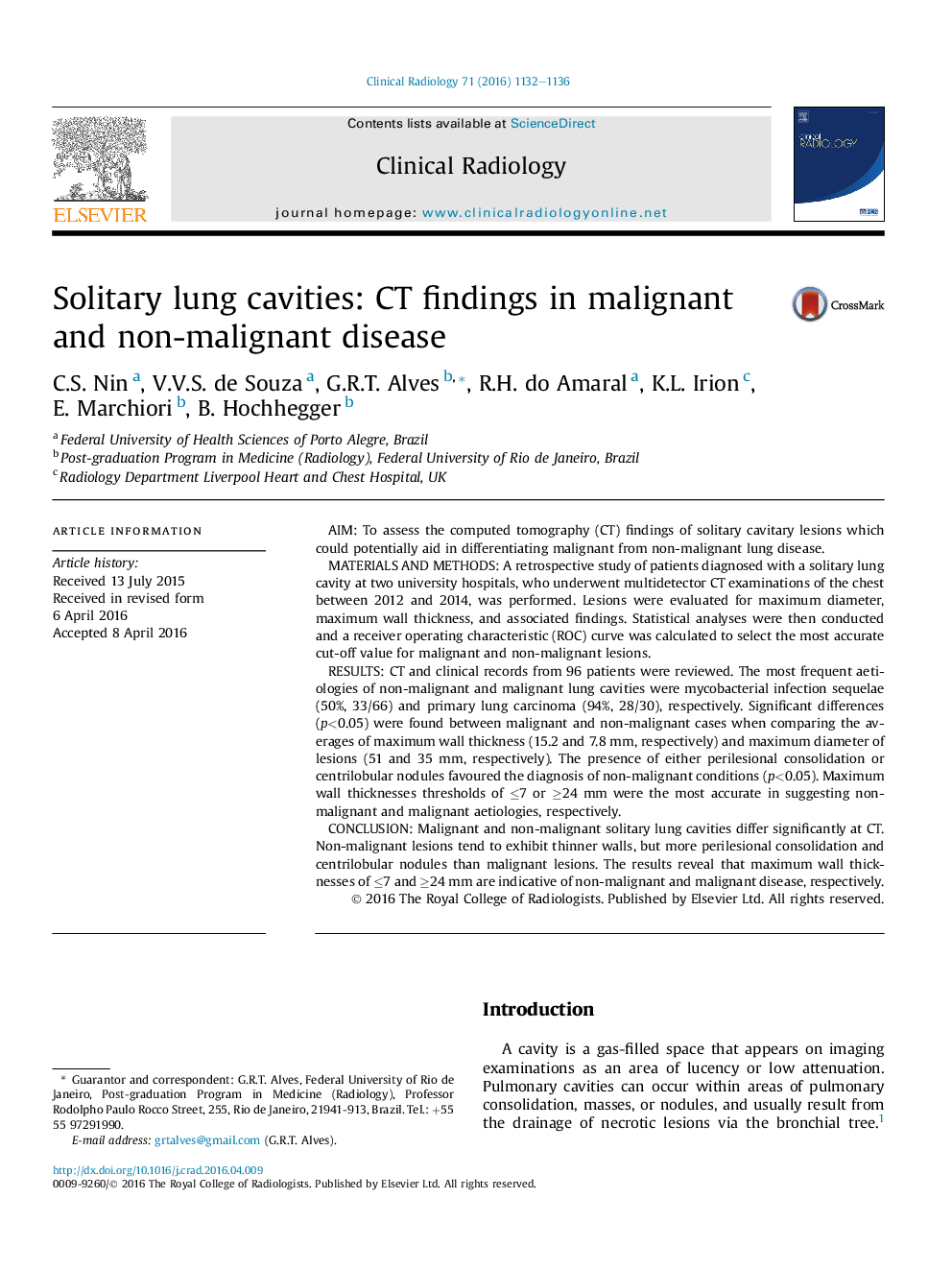| Article ID | Journal | Published Year | Pages | File Type |
|---|---|---|---|---|
| 3981113 | Clinical Radiology | 2016 | 5 Pages |
•CT of solitary lung cavities can aid in the diagnosis of malignant conditions.•Malignant lesions tend to display thicker walls.•Non-malignant diseases exhibit more consolidations and centrilobular nodules.•Maximum wall thicknesses of 7 mm or 24 mm are indicative of non-malignant and malignant diseases, respectively.
AimTo assess the computed tomography (CT) findings of solitary cavitary lesions which could potentially aid in differentiating malignant from non-malignant lung disease.Materials and methodsA retrospective study of patients diagnosed with a solitary lung cavity at two university hospitals, who underwent multidetector CT examinations of the chest between 2012 and 2014, was performed. Lesions were evaluated for maximum diameter, maximum wall thickness, and associated findings. Statistical analyses were then conducted and a receiver operating characteristic (ROC) curve was calculated to select the most accurate cut-off value for malignant and non-malignant lesions.ResultsCT and clinical records from 96 patients were reviewed. The most frequent aetiologies of non-malignant and malignant lung cavities were mycobacterial infection sequelae (50%, 33/66) and primary lung carcinoma (94%, 28/30), respectively. Significant differences (p<0.05) were found between malignant and non-malignant cases when comparing the averages of maximum wall thickness (15.2 and 7.8 mm, respectively) and maximum diameter of lesions (51 and 35 mm, respectively). The presence of either perilesional consolidation or centrilobular nodules favoured the diagnosis of non-malignant conditions (p<0.05). Maximum wall thicknesses thresholds of ≤7 or ≥24 mm were the most accurate in suggesting non-malignant and malignant aetiologies, respectively.ConclusionMalignant and non-malignant solitary lung cavities differ significantly at CT. Non-malignant lesions tend to exhibit thinner walls, but more perilesional consolidation and centrilobular nodules than malignant lesions. The results reveal that maximum wall thicknesses of ≤7 and ≥24 mm are indicative of non-malignant and malignant disease, respectively.
